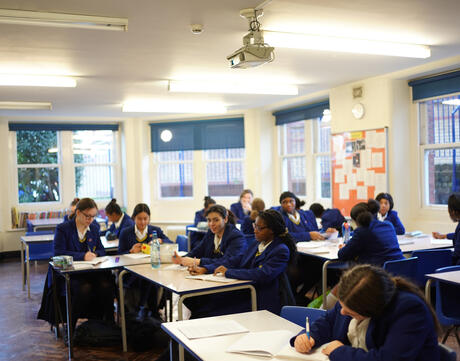
People's Assembly
Overview
About This Teaching Strategy
This teaching strategy was designed for use in UK classrooms. Teachers in other contexts may choose to adapt it for their students.
A people’s assembly is a powerful process, which gives students the opportunity to review and discuss a topic, text or question before feeding their ideas back to the class. Students work in groups and take it in turns to share their ideas, using hand signals to communicate with and respond to each other. The discussion is managed by a student facilitator and recorded by a student note-taker, who is also responsible for feeding ideas back to the class. This strategy boosts student independence, creates an inclusive space, and develops students as active listeners. It can also help increase student confidence and assist with community building.
Some people’s assemblies run with three values at their core, which are a powerful means of grounding the discussion and creating a culture of respect:
- Inclusivity: Everyone’s voice is valued and everyone has the right to be heard. No one person dominates the discussion. The loudest voice is not always right: a people’s assembly is about sharing ideas and learning from each other. Everyone feels respected, and able to participate safely without fear of judgement or ridicule.
- Active Listening: Everyone genuinely listens to what others are saying, and participants are not thinking in advance about what they are going to say.
- Trust: Everyone has belief in the assembly process, in the hand signals, in the facilitation, the note-taking, and in the sharing of ideas. Participants acknowledge that the process won’t be perfect, but it will only work if everyone trusts in the process and works together.
Lesson Plans
Steps for Implementation
Unlimited Access to Learning. More Added Every Month.
Facing History & Ourselves is designed for educators who want to help students explore identity, think critically, grow emotionally, act ethically, and participate in civic life. It’s hard work, so we’ve developed some go-to professional learning opportunities to help you along the way.
Exploring ELA Text Selection with Julia Torres
On-Demand

Working for Justice, Equity and Civic Agency in Our Schools: A Conversation with Clint Smith
On-Demand

Centering Student Voices to Build Community and Agency
On-Demand
















